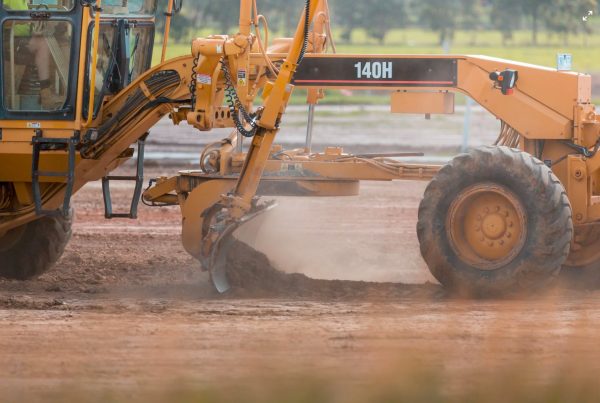ENGAGE IN PREVENTIVE MAINTENANCE
A regular service and maintenance plan, performed before anything breaks or goes wrong, is probably the best tool you can use. At the same time, you look for methods to lower equipment running expenses. Many technologies covered here use electronic warnings to urge suggested services, eliminating guessing from the equation.
LEAVE FLUIDS MONITORING TO YOUR DEALER
Your dealer will inspect and analyze coolant, oil, and hydraulic fluids for excessive wear, low levels, contamination, and other issues that may require remedial action to prevent failure or damage under the SOS fluid analysis program.
USE PRODUCTLINK TO COLLECT DATA
Product Link is a technology that various machines have integrated into them that provides details on the health and condition of your equipment. It lets you view use records and maintain contact with a sizable dealer network. By working smarter, you can boost fleet management and the trust of your supervisors, workers, and clients.
VIEW ASSETS IN THE FIELD USING VISIONLINK TECHNOLOGY
Your equipment’s engine, hours, systems, location, diagnostic codes, and fuel and idle time are all provided to you via VisionLink. This system delivers data directly to your mobile phone or other device using satellite/cellular technology, with possibilities for up-to-the-minute and real-time data. The transmitting antennas are made small, so it is simpler to access them when an adjustment is required.
LOOK INTO THE NETWORK OF SERVICE-INFORMATION SYSTEMS
With the help of 17,000 publications, the SIS Web quickly makes a world of information available to you. You can discover maintenance instructions, technical specifications, assembly or disassembly instructions, and more.
Equipment research requires a lot of time, but SIS makes it easier to get the information you need. The SIS Web provides human management solutions that increase productivity and reduce risk. It can produce a realistic timetable for your service professionals to keep them from being idle or overburdened.
MONITOR THE EQUIPMENT REGULARLY
Every day, take a trip around the facility and visually examine your equipment to look for smoke, leaks, or unexpected circumstances. You should also record any subpar performance. Any data obtained can be shared with your dealer to stop minor faults from developing into significant issues and improve equipment monitoring. Pay attention to the machine’s overall wear and tear, windscreen fractures or pits, the state of the bucket and digging teeth, tire condition, and even the tiniest cracks where welds are present.
PERFORM SMALL MAINTENANCE NOW TO AVOID MAJOR REPAIRS LATER
Allow the statistics and alarms to help you identify problematic situations and address them before they cost you money or time. For instance, replace an inadequate seal to prevent the machine from running out of fluid or springing a large leak that results in a significant expenditure.
EDUCATE OPERATORS ON BEST PRACTICES
Use the machines to track user performance daily to recognize and reinforce effective techniques and identify any areas that can benefit from extra training. By using your equipment correctly and not pushing it over its limits, you’ll prevent early wear and performance issues and extend its lifespan.
CHECK THE BASIC ELEMENTS
Regularly inspect the quality of grease, fittings, air and oil filters, and other components necessary for the operation to help keep equipment running costs low. The idea is similar to how a good air filter on an automobile can help it get greater fuel efficiency.
COLLECT AND RETAIN COPIES OF RECORDS
To identify trends, collect and save data that tell you about the history of your machines, component life, and running expenses. Thanks to those figures, you will be able to monitor workflow and costs with more accuracy and precision, which will also help you keep the machine’s resale value high.
ANALYZE THE COST BETWEEN ON-SITE MAINTENANCE AND IN-SHOP REPAIRS
Instead of transporting your equipment to the shop whenever anything breaks, have a skilled technician come to you for routine maintenance. Some business owners think house calls are too expensive, but that isn’t the case as they save money on costly repairs and the expense of transporting large equipment.
KEEP IN TOUCH WITH YOUR DEALER
Establish and maintain a reliable connection with your preferred dealer so you can turn to them if you need to borrow machinery while yours is being repaired. Additionally, you may use this to field test equipment you are considering purchasing or renting.
MAKE USE OF CHECKLISTS
Create and put into action a maintenance plan and service checklists that require the signature of site and task managers. This process keeps workers responsible, organizes service items, and makes them consistent. It also offers you evidence that you’ve maintained the equipment in good shape for when you sell them.
DON’T SAVE MONEY ON QUALITY
Allow the experts to offer service and parts so you can be confident you’re receiving the best. Taking shortcuts with defective components or unskilled professionals costs more money down the road since components don’t last as long as they should, or poor servicing results in a failure. For instance, hydraulic oil should be of high quality, just like the machine, as it lubricates and safeguards moving components and is essential to the power-transfer process.
SET UP A COMMUNICATIONS PLAN
Ensure that everyone on the path between you and your machine is well informed about what to do and whom to contact in various circumstances. This might involve mishaps on the Jobsite, property damage, faulty equipment, theft, unforeseen issues, or when things don’t feel quite right. When everyone understands what to do and has all the tools they need to report a problem, including names, contact information, and process charts, you save delays and money.
CREATE AND MAINTAIN A DOWNTIME PLAN
Substitute the typical production slumps with necessary but seldom top-priority activities, such as maintaining and repairing equipment, running errands and making deliveries, picking up and finishing documentation such as schedules and forms for awaiting inspections, rearranging, or staging supplies at the project site for forthcoming working days, and training your employees.
USE AFTERMARKET PARTS
Instead of buying new parts from a main dealer, you can save thousands by sourcing aftermarket machinery parts from a local or nationwide dealer, such as KEP Cat Parts in the UK.
BE PREPARED FOR THE WORST AHEAD OF TIME
Spend time creating a backup plan for every worst-case situation, then let everyone know about it. Thinking through these issues when you’re not in a panicked, crisis mentality will provide a lot better outcome than when you’re forced to make judgments on the spot.
KEEP YOUR TEAM UPDATED AND HAPPY
Ask for input from the workforce to determine what functions well and what does not, to recognize and reward excellent performance, and to encourage and promote best practices. Instead of letting your employees unintentionally discover that difficulties are frequently rewarded with overtime or praise for solving a problem quickly, demonstrate and explain how complacency undermines profitability and productivity.
ANALYZE THE ENTIRE FLEET’S USAGE
To improve operations at all of your job locations, identify overused or unused equipment and make the necessary changes. Avoid running equipment for longer than necessary or for only 20% of the workday. The goal is to operate each piece of equipment at or close to its maximum potential. You can either hire experts to handle this for you or create your spreadsheets, charts, calendars, and other monitoring tools to keep an eye on essential business areas.
EXAMINE AND MAKE THE MOST OF DOWNTIME
Invest resources in learning how long your machinery is idle. Unnecessary idling can violate some states’ pollution standards and waste gasoline, which is also a waste of money. It also wears out your machine’s engine and reduces its warranty’s remaining time.
GIVE YOURSELF ROOM FOR STRATEGIC THINKING
Set aside time each day to analyze your data, look for solutions, advertise your business, create promotional materials and research, come up with fresh concepts, and keep one step ahead of the competition.
ADD FEATURES AS SOON AS POSSIBLE
Before you reply, “Oh, I’ll add it later,” figure out the savings you’ll get from data features like VisionLink, ProductLink, EMSolutions, and preventative maintenance plans. These features can pay for themselves and result in significant savings while you wait till you have more money or time because of their less downtime, optimal performance, and highest efficiency.
LOOK AT REBUILT PARTS
Consider remanufactured components as a less expensive alternative with quality equivalent to new ones. They often come with warranties, are of the highest quality, and are promised to be a perfect match for your particular machine.
SAVE MONEY WHEN PURCHASING TECHNOLOGY
When feasible, include data features when you acquire a machine since doing so is less expensive than adding them later.
ALIGN MACHINE WITH TASK
Spend some time doing the math to ensure that you are utilizing the appropriate-sized tools for the task. When you attempt to utilize a smaller machine that is better left to the capabilities of more extensive equipment or when you employ an enormous machine for a small operation, your bottom line suffers.
RESEARCH LEASE, RENTAL, AND LOAN OPTIONS
Compare the expenses of utilizing or buying undersized, overly large, or infrequently utilized equipment with those of leasing, renting, or borrowing comparable equipment. These choices spare you the hassle of replacing outdated equipment, provide you access to newer models every few years, and cost less for storing the equipment and shipping.
CONTROL YOUR UNDERCARRIAGE
Avoid abusing or misusing any equipment, especially machines with tracks, because that multifunctional component accounts for 50% of the cost of repair and maintenance for equipment that incorporates them. Poor circumstances can still harm vital components of undercarriages, including seals, links, pins, rollers, idlers, segments, bushings, and shoes.
KNOW YOUR NEEDS FOR EQUIPMENT REGENERATION
Understand your equipment’s limitations and appreciate the fact that it must renew at regular intervals rather than disregarding it, which might lead to damage, malfunctions, and costly repair.
GET RID OF WASTE
Analyze your fleet and utilize the data to calculate the percentage of productive time and profit you make by eliminating waste like excessive idling, improper operator behaviors, overtime, wasteful use, and other costly activities.
GIVE YOURSELF ENOUGH TIME
Schedule time for regular servicing and preventative maintenance into the daily routine. It will save you from paying extra fees for services or deliveries that must be provided during an emergency, in a hurry, after business hours, or on a weekend or holiday.
VERIFY THE MANUAL
To guarantee optimum performance and prolong the life of machines, adhere to the manufacturer’s recommendations for operation, components, fluids, maintenance, and other practices. Even if you believe you know what your equipment wants, following the instructions will help you save money on heavy machinery.
FOLLOW THE WORK ORDER
Establish a system whereby nothing occurs without a work order. It will not only give you complete control over what is purchased, but it will also result in a precise record of what was purchased, why it was ordered, who requested it, and when. In most cases, you won’t remember those specifics; even if you do, they’ll probably be vague.
COMPARE THE PERFORMANCE OF YOUR FLEET TO OTHERS
Find out how your fleets of machines and equipment compare domestically, nationally, and internationally, as this information can help you establish valuable benchmarks for further studies and decisions.




